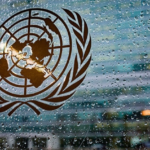Russia Shifts HUMINT Recruitment Tactics Amid War in Ukraine. Since the onset of the war in Ukraine, Russia’s intelligence services have significantly altered their human intelligence (HUMINT) protocols, moving away from traditional Cold War-era practices. Historically, these operations relied on in-person contact between agents and sources, preceded by extensive background research. However, the Kremlin’s agencies now heavily employ remote recruitment methods via social media platforms and messaging apps, reflecting a shift necessitated by evolving operational constraints.
Key Changes in Russian HUMINT:
- Remote Recruitment:
- Russian intelligence now uses social networks and encrypted messaging to recruit operatives, sometimes without disclosing their affiliations. Targets often include employees of critical infrastructure or individuals with access to sensitive facilities. The recruitment of saboteurs for acts of sabotage, such as the recent arson attack on a Berlin metallurgical plant linked to Diehl Metall Applications, illustrates this trend.
- Economic Incentives:
- Operatives are frequently lured with promises of financial rewards. In Ukraine, Russian military intelligence recruits individuals to execute attacks on military personnel, offering payments for successful operations, often exploiting economic hardship. However, cases of nonpayment and deception by Russian handlers have also been reported.
- Broader Recruitment Pool:
- Unlike the Cold War era, which relied on embedded illegal operatives with long-standing cover identities, remote methods allow a much larger pool of potential recruits. This expansion increases operational reach but simultaneously raises the risk of exposure for both agents and their missions.
- The Absence of On-Site Intelligence Officers Challenges Local Counterintelligence Efforts One notable aspect of Russia’s shift to remote recruitment methods in intelligence operations is the reduced physical presence of intelligence officers in target countries. This evolution complicates the work of local counterintelligence agencies in several key ways:
- Limited Direct Oversight:
- Without the physical presence of operatives, counterintelligence agents face challenges in conducting surveillance, intercepting communications, and gathering actionable evidence against individuals orchestrating espionage activities.
- Digital Anonymity:
- Remote recruitment, conducted via encrypted messaging apps and social media, creates a veil of anonymity for handlers. This digital layer makes it harder to trace operations back to specific individuals or states, increasing the operational burden on counterintelligence teams.
- Decentralized Networks:
- The dispersion of recruitment across online platforms prevents counterintelligence agencies from identifying and monitoring centralized hubs of espionage activity, traditionally established around embassies or consulates.
- Dynamic Threat Landscape:
- The lack of direct interaction between intelligence officers and recruited agents forces counterintelligence efforts to shift toward cyber forensics, digital intelligence, and social engineering to counteract these operations.
- This strategic pivot by Russian intelligence amplifies the challenges faced by counterintelligence professionals, necessitating innovative approaches to detect and disrupt espionage in the digital realm.
- Western Retaliation and Constraints:
- The expulsion of Russian diplomats—many of whom doubled as intelligence officers—by NATO countries has diminished Moscow’s ability to conduct traditional recruitment in allied nations. In response, Russia has turned to its diaspora and online platforms to fill this gap, though experts believe military intelligence and the Foreign Intelligence Service (SVR) remain wary of overly relying on diaspora connections.
- Challenges and Risks:
- While remote recruitment broadens Russia’s operational scope, it also heightens the likelihood of detection and compromise. Intelligence operations initiated online leave digital traces, which can be used by counterintelligence agencies to uncover networks and thwart missions.
Policy Implications:
The proliferation of such tactics poses challenges for governments and tech platforms alike. Countering this method could require measures that impinge on online privacy, such as restricting VPN services, limiting Russia’s access to international social media platforms, or even curbing the use of Telegram, a platform widely associated with Russian operations. However, these actions risk unintended consequences, including limitations on freedoms for legitimate users.
This evolution in Russia’s intelligence approach underscores the growing role of technology in modern espionage while amplifying the need for robust counterintelligence strategies tailored to the digital age.

More on this story: Russian migrants threaten Euro-Atlantic security

More on this story: The Iron Curtain reborn as the only way to stop expanding Russian aggression

More on this story: Primrose-Morrison case reveals potential scale of Russian presence in the West




